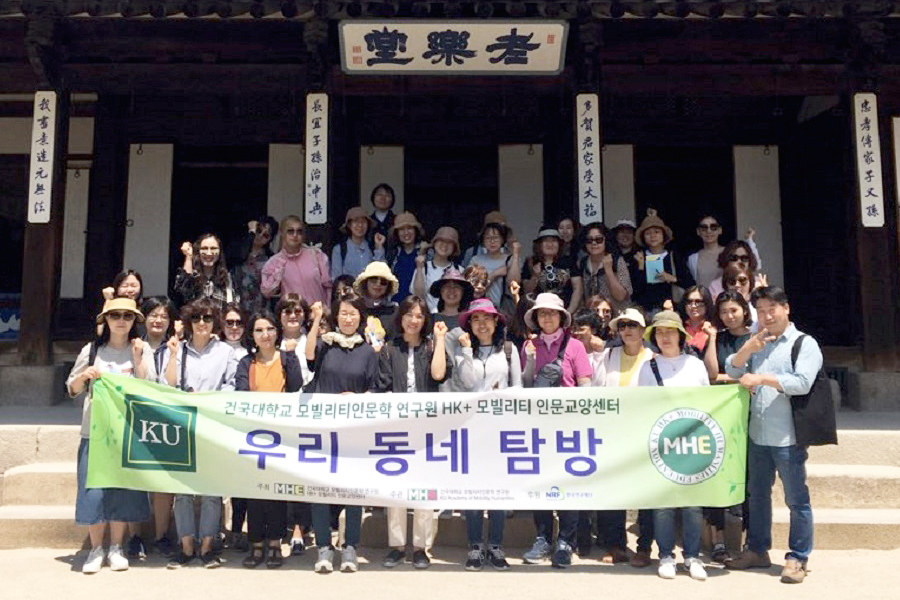
Local cultural interpretation tour #4, which intends to familiarize the meaning of mobility by exploring the culture of the community together took place.
– May 31 (Fri), from 10 am to Noon
– Under the theme of “Along the Way of 3.1 Independence Day Movement Protest”
– Path: Unhyun Palace – Chondogyo Bridge – the Topgol Park
The second son of Heungseon Daewonkun, the second son of Gojong (reigned from 1863 to 1907), was born at the age of twelve to the throne at the Unhyeongung Palace in Seoul, which is the private house of the Joseon Dynasty. It is a suburb that existed before the reign.
After the reign of King Gojong, his father, Lee Eung-eo, became Heungseon Daewonkun. Daewonun promoted many projects such as the abolition of Seowon, the rebuilding of Gyeongbok Palace, and the reform of tax system. In 1882 (Gojong 19) he was kidnapped in Tianjin, Great Qing, China. The Hanok and the pavilion of Heungseon Daewonkun were all designated as historic sites. Originally, it was said that it was big and grand compared with the palace, and Daewongun’s favored building, Ajaedang disappears, and what remains as Hanok is only Noandang, Norakdang, and Irodang.
The Chondogyo Central Cathedral, the 36th tangible cultural asset of Seoul, is a western style building, which was built in 1921 and was used as the Central Cathedral by the son of Bonghee Son, the third chief of Chondogyo. It has a baroque domed roof and a pillar inside. It is not absolutely sacred, as is the church, cathedral, or chapel of other religions. It is a sacred space when performing various religious rituals, but it returns to the secular world when holding ordinary events. Therefore, various political rallies, art performances, lectures, and even banquets can be held here.
Topgol Park, designated as Historic Site No. 354, is the first urban park in Korea and was the place where the March 1, 1919 Movement Protest took place. In the place of the Goryeo Dynasty, there was a temple called Wongaksa in 1465 (11th year of King Sejo), but it was abandoned at the time of Yeonsankun and built as a park by the design of Englishman Brown in 34th year of King Gojong. It was opened in 1920 under the name of ‘Pagoda Park’, but it was renamed as ‘Topgol Park’ in 1992. At the time of the March 1 movement, citizens and students gathered here and cried out for a long time. The Second of the National Treasure, Octagonal Stone Pagoda, where the Student Representative, had read the Declaration of Independence, still remains here.
Through this visit, we walked along the 3.1 Independence Day Movement Protest 100 years ago, and it was confirmed that the Movement of 100 years ago was not just a shout but continuing today.
The 2019 Mobility Humanities Fair, which has reached the 4th stage, is a place where residents can directly experience mobility-based cultural exploration in the form of walking, which is the basis of ordinary mobility, and realize that they are everywhere and the meaning of walking that will always last. It was a precious time.


